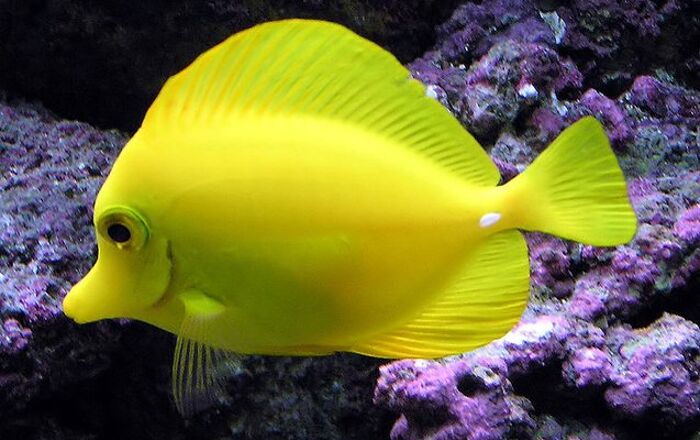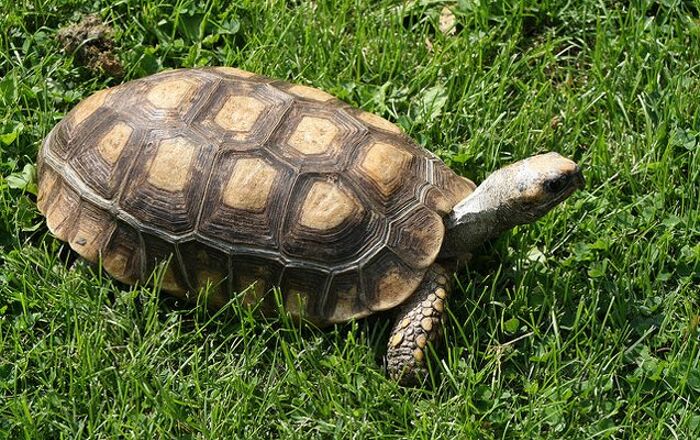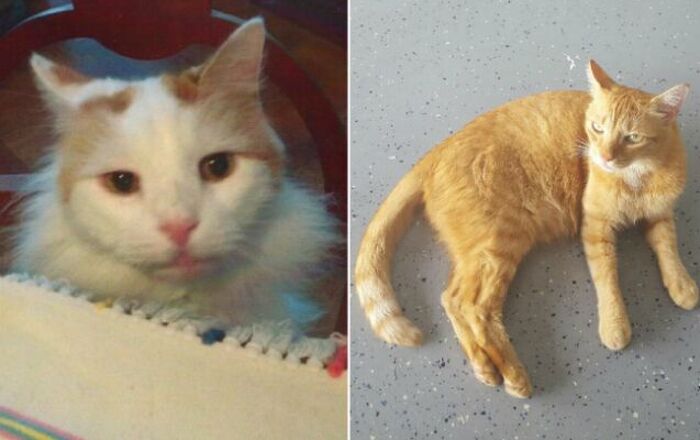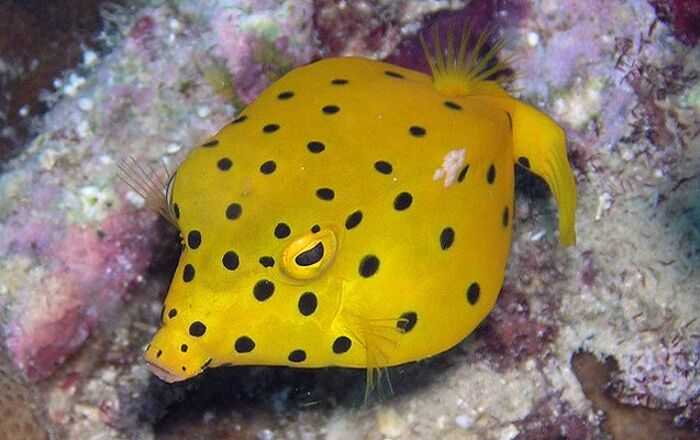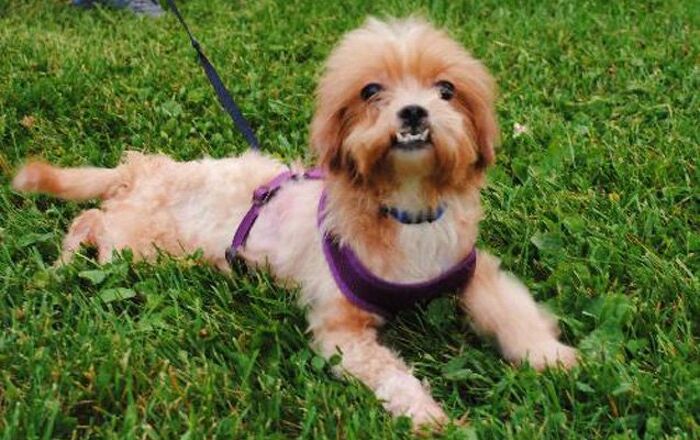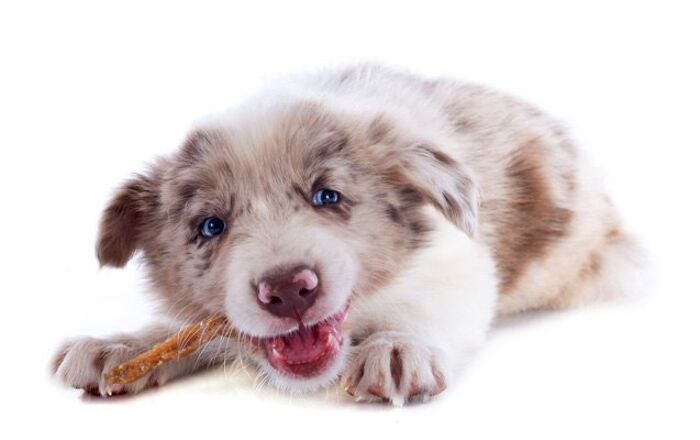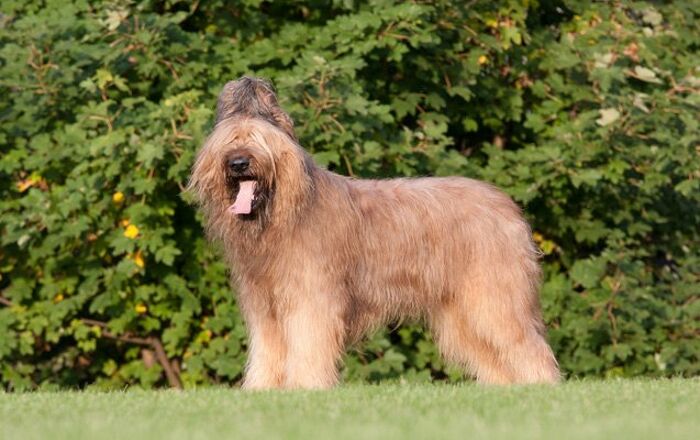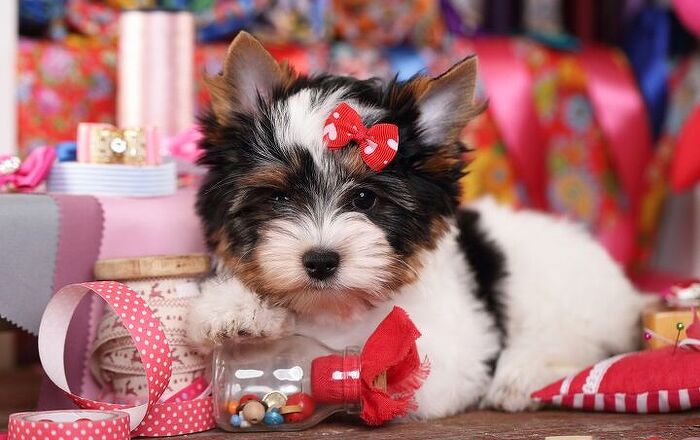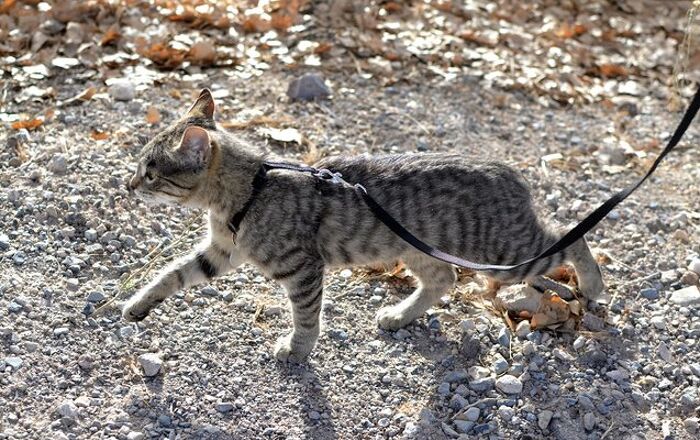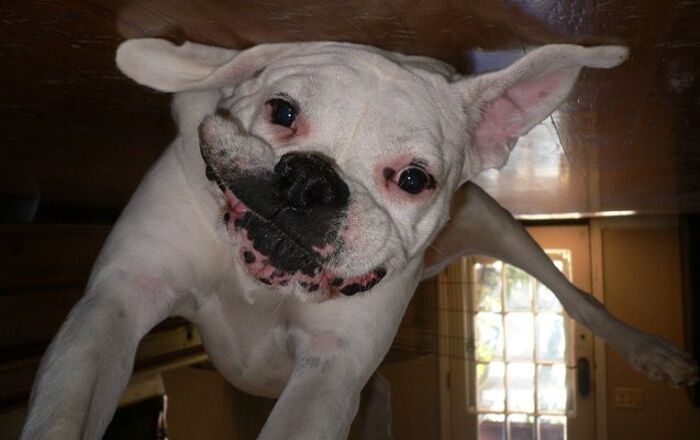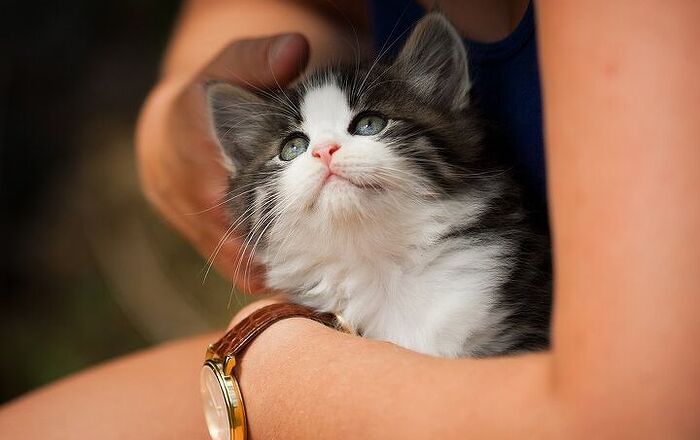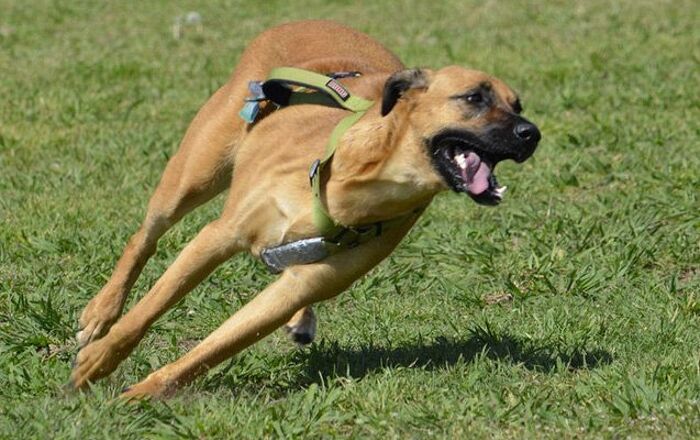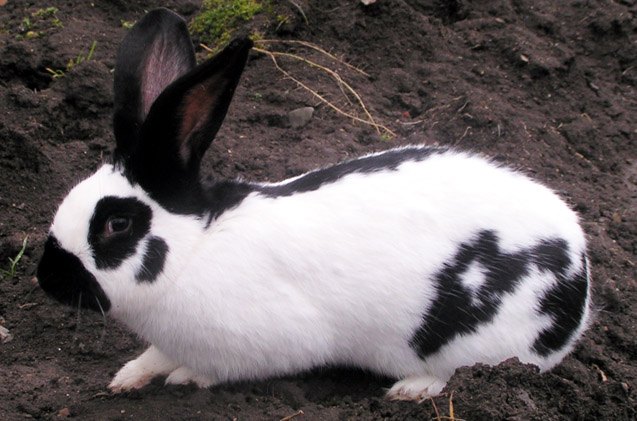
Checkered Giant Rabbit Breed History/Origin
The origin of the Checkered Giant breed is disputed, but it’s believed that this rabbit first made an appearance in 1800 either in France or Germany when Flemish Giants, French Lops and spotted rabbits were bred together to create a breed called “Land Kaninchen.” This breed was about 10-12 lbs and did not have the markings we know today’s Checkered Giant to have. They continued to breed them with Flemish Giants throughout Germany to increase their size, eventually making the “Lorraine rabbit”, sometimes called the “Great German Spotted rabbit.”
In 1904, a gentleman by the name of Mr. Otto Reinhardt of Reinfalz, Germany, bred the Great German Spotted rabbit to a black Flemish Giant, which produced the Checkered Giant we know today. They arrived a mere six years later onto American soil and shortly after, the American Rabbit Breeders Association (ARBA) accepted the Checkered Giant as a recognized breed.
The Checkered Giant was first known as the Land Kaninchen.
Overall Description
The Checkered Giant has a slender yet muscular build and have a long, hare-like body with a semi-arched/mandolin body type. They have long, powerful legs, a wide head and broad ears that should be upright most of the time.
Coat
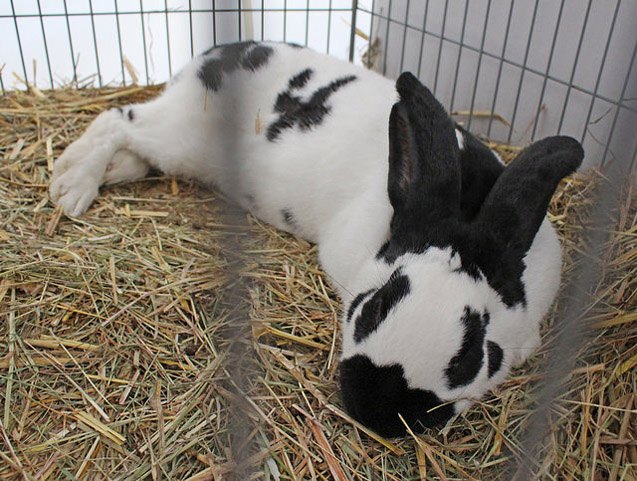
This particular breed of rabbit has soft short- to medium-length fur which is soft and easy to maintain. Most rabbits will clean themselves (as they are rather clean animals), however they are known to shed more in particular times of the year. If you keep your rabbit as an indoor pet, you’ll want to groom them once every week or every other week during shedding season in order to have the least amount of fur possible flying inside your home.
Colors
The Checkered Giant is one of the few ARBA recognized breeds that has distinctive markings. The only color that the ARBA accepts is white with either blue or black markings resembling a butterfly across the nose. They also have two black or blue spots on either side of the body with a black or blue stripe running along from the base of their ears to their tail over the spine.
Checkered Giants are mostly used for show, but they can also make wonderful pets.
Care Requirements
Due to this rabbit’s size, they need a rather large enclosure to keep them comfortable while their human family is not in the home. This means having a cage that is at least 3 ft x 3 ft x 4 ft., and make sure that you rabbit can easily stretch out at the bottom of their cage. Enclosures should be made of wire and have a solid bottom (such as plastic or metal), as sores are easily made when rabbits lay on a wire-bottom cage for too long so for their safety and comfort, make sure to purchase a wire cage with a solid bottom. The bottom should also be lined with hay (horse hay is acceptable) and should be spot-cleaned for faeces every day and completely replaced at the end of every week. These rabbits do well either indoors or outdoors, but be sure that outdoor enclosures are covered from the elements (sun and rain), but also provide enough draft to keep them cool during warmer temperatures. Should the temperatures raise or drop too much, be sure to bring them indoors.
A Checkered Giant’s diet is not unlike any other pet rabbit in that it should consist of 70 percent good-quality hay. The rest of their diet should be a healthy mix of pellets, vegetables and fruits, but they should be given these sparingly. Fresh water and hay should be readily available to your rabbit at all times. If you’re unsure, the easiest thing is not to feed it to them. Some surprising foods that are actually dangerous to rabbits include onions, leeks, chives, and mustard greens. Contrary to popular belief, you should not feed your rabbit most types of lettuces, as they contain lactucarium, which will give your rabbit diarrhoea. There are plenty of other leafy greens and vegetables that you can feed your rabbit such as parsnips, watercress, Brussel sprouts and fennel.
These rabbits are mostly used for show rather than for meat purposes, but they can also make wonderful pets as long as they are given plenty of human affection and lots of outdoor playtime. Indoor rabbits need to have lots of time out of their enclosures in a bunny-safe room, which means everything and anything that could harm your rabbit is out of sight (electrical cords, for example).
Health
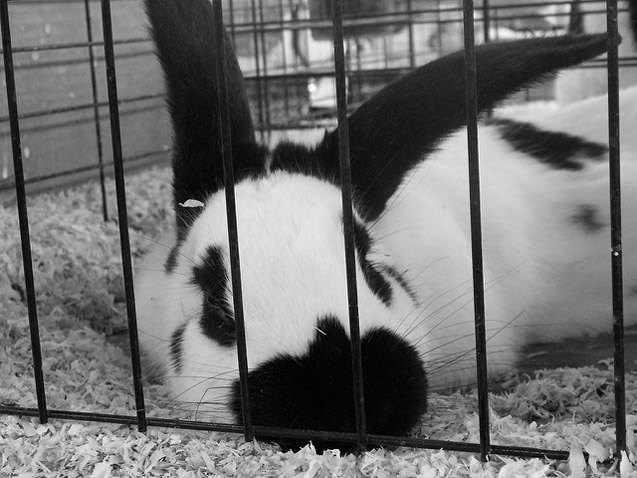
Unlike most animals, rabbit teeth never stop growing. Thankfully, they are also constantly being worn down by everyday activities such as chewing their food, like hay. If your rabbit’s teeth are not being worn down, their teeth may start growing into their jaw and face, causing severe pain. Signs of overgrown teeth or an infection due to overgrown teeth include loss of appetite, sluggish activity or drooling. Be sure to check your rabbit’s mouth weekly for signs of overgrown teeth and bring it to the vet if you suspect it has an infection caused by overgrown teeth. Vets can treat both the infection with antibiotics as well as shave down their teeth to a manageable length.
Ears should also regularly be checked for ear mites, as this is a common condition in rabbits, especially those who are mostly outdoors. In order to protect them from worms, be sure to also give your rabbit a pea-sized amount of de-worming paste every spring and fall.
Rabbits can be spayed and neutered and if you find your rabbit to be particularly aggressive, this can help calm them down. Does (female rabbits) can be spayed between 4-6 months of age (depending on how early your local vet can safely do the procedure) and bucks (male rabbits) can be neutered when they are just 3 1/2 months old.
The Checkered Giant has a slender yet muscular build and a long, hare-like body with a semi-arched/mandolin body type.
Temperament/Behavior
This breed of rabbit isn’t as affectionate as other breeds, but that’s not to say they aren’t a gentle breed. They enjoy human interaction even when they are used for breeding/show purposes. The Checkered Giant would make a good pet for those looking for a sweet companion, but isn’t as cuddly or needy as other rabbit breeds. This breed does well with singles, couples or seniors who have a large enough home and backyard to keep it happy and healthy. They also do well with families with older children, as young children may not be able to hold them properly (as they are on the larger side of rabbits), and also may drop them more easily than medium-sized rabbits.
Rabbits are arguably harder to potty train than other animals such as cats or dogs. Rabbits usually have a “potty corner” in their enclosure where they usually like to do the deed so if you place a litter box in that particular corner, they will generally make the connection and slowly understand that is where they are supposed to do their business. Some owners have found success by placing many litter boxes around their homes. Always approach potty training with lots of patience, time and treats to reward your rabbit when they have successfully completed a task (apple slices are great rabbit treats).
In order to keep most of your possessions as bite-free as possible, ensure your rabbit has a few toys it can gnaw at. This can mean something as simple as a few toilet paper rolls to as lavish as a mentally stimulating rabbit-safe toy from your local pet store.
Photo credit: Corinne Benavides/Flickr; Samantha Stark/Flickr


